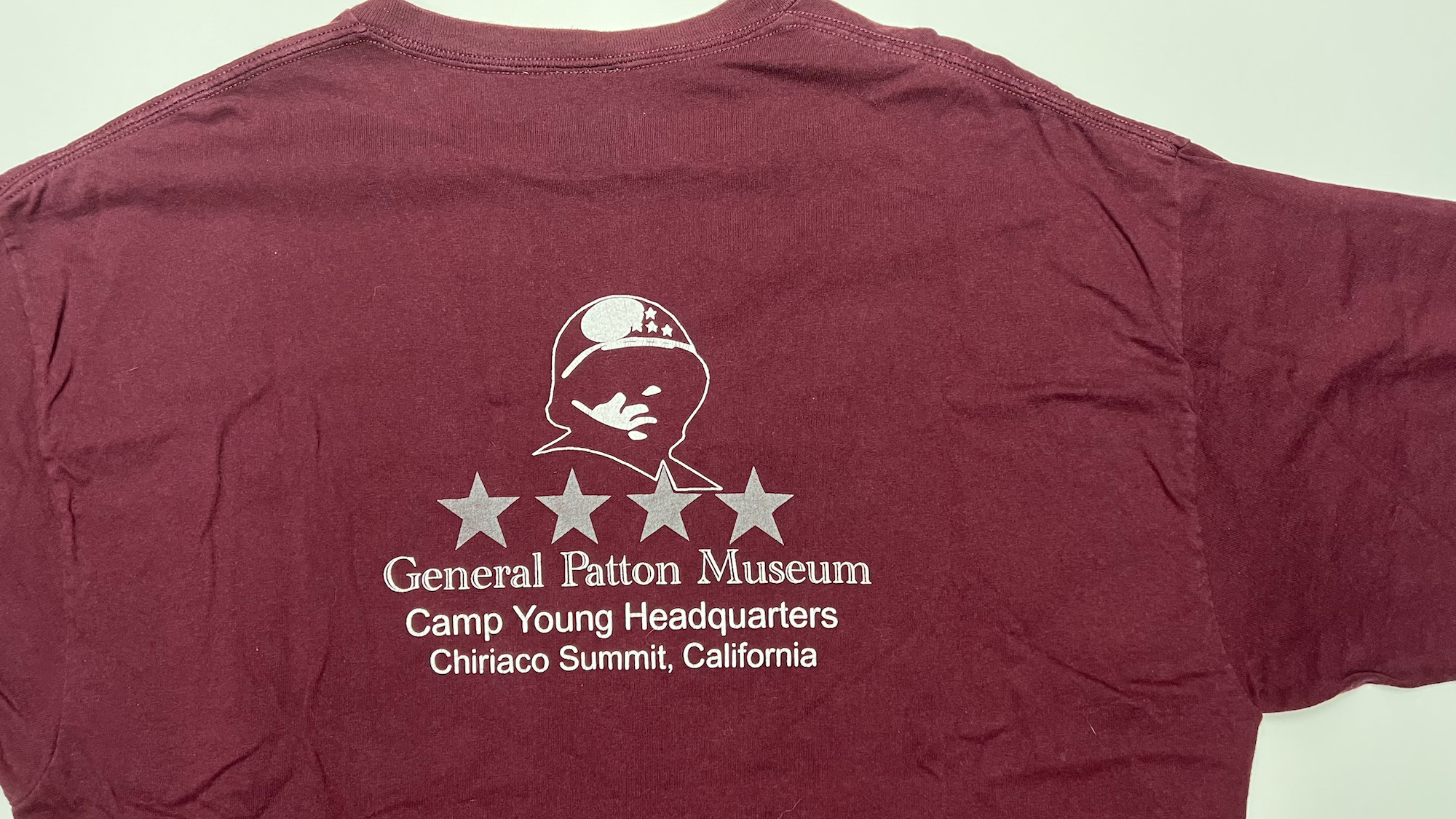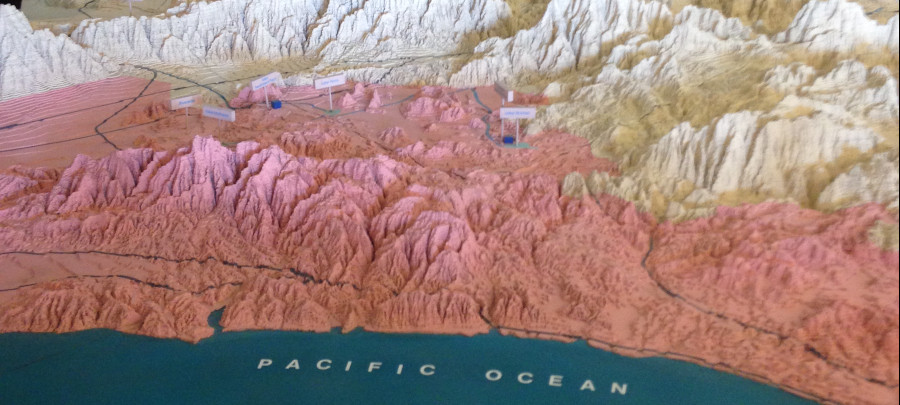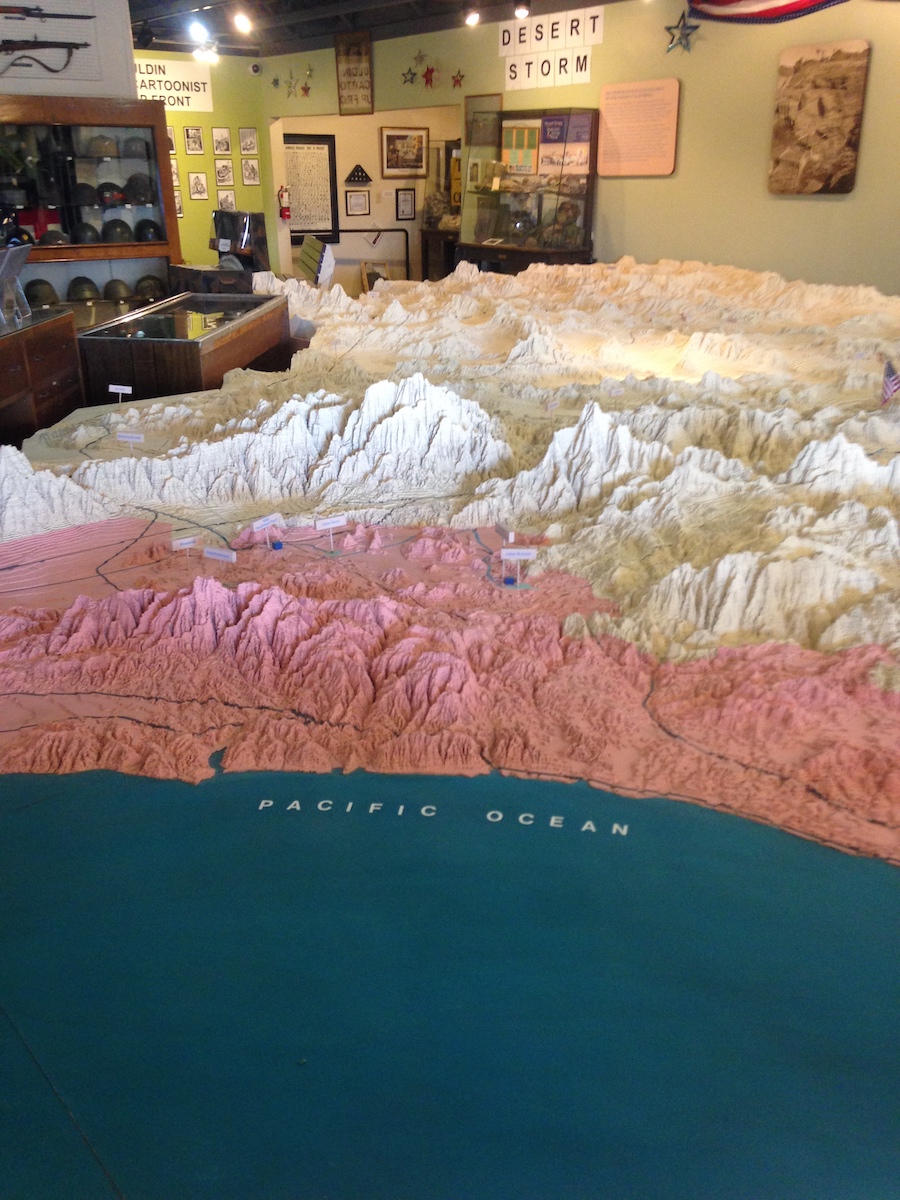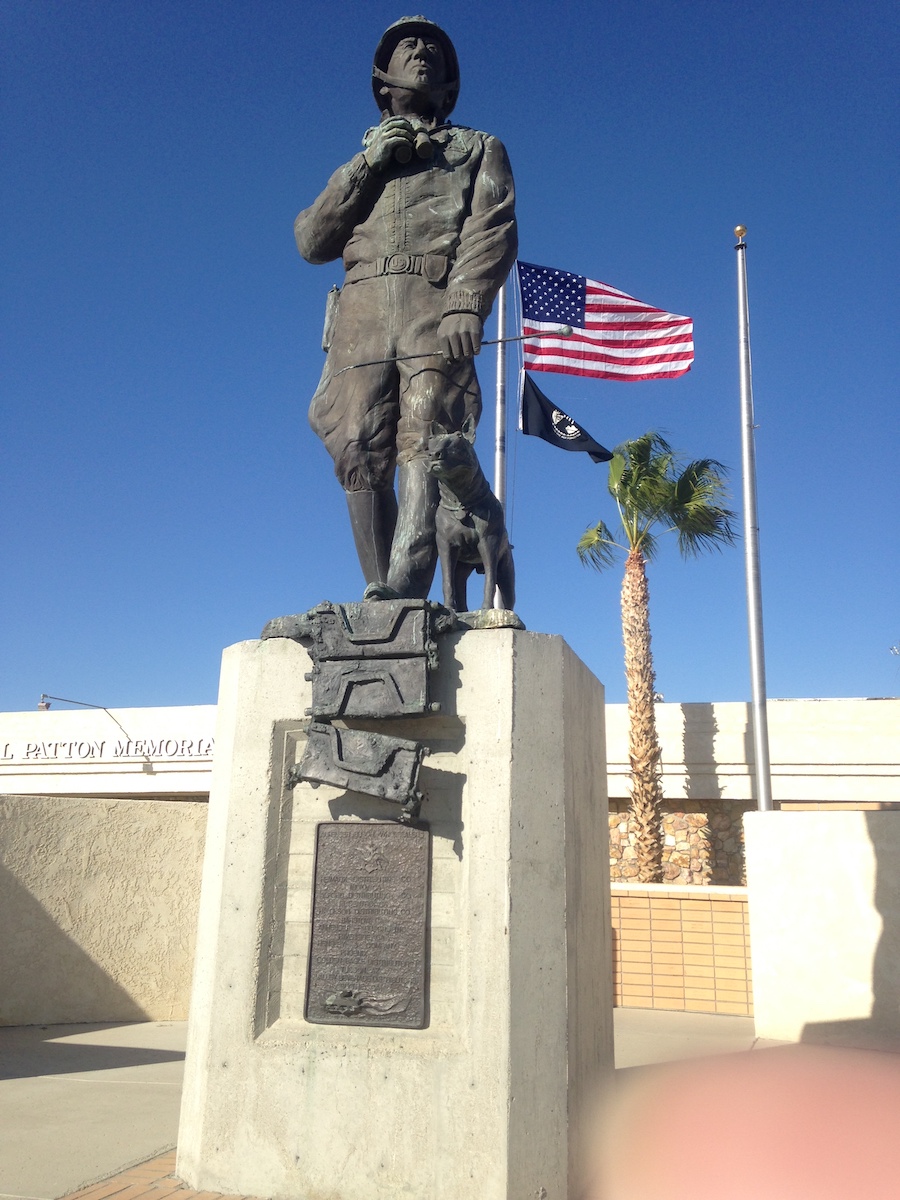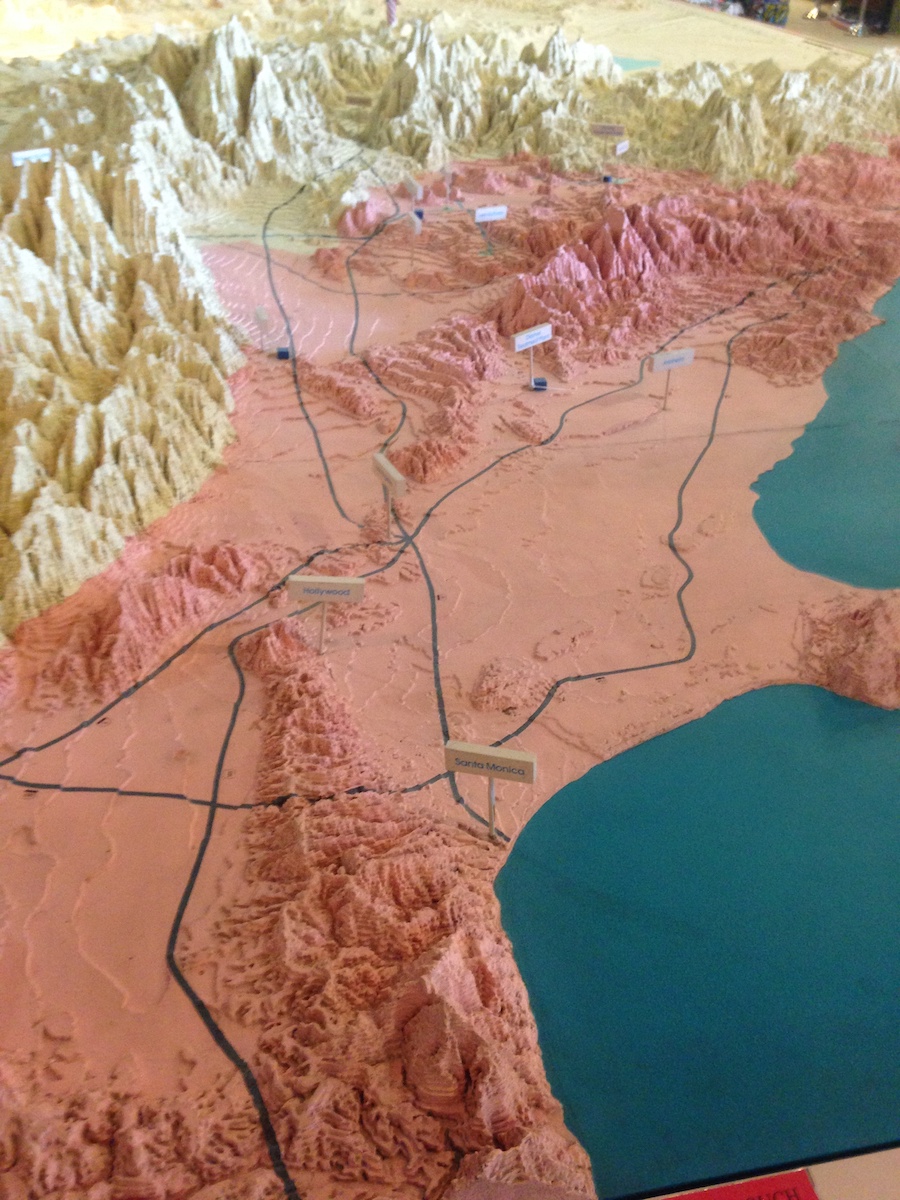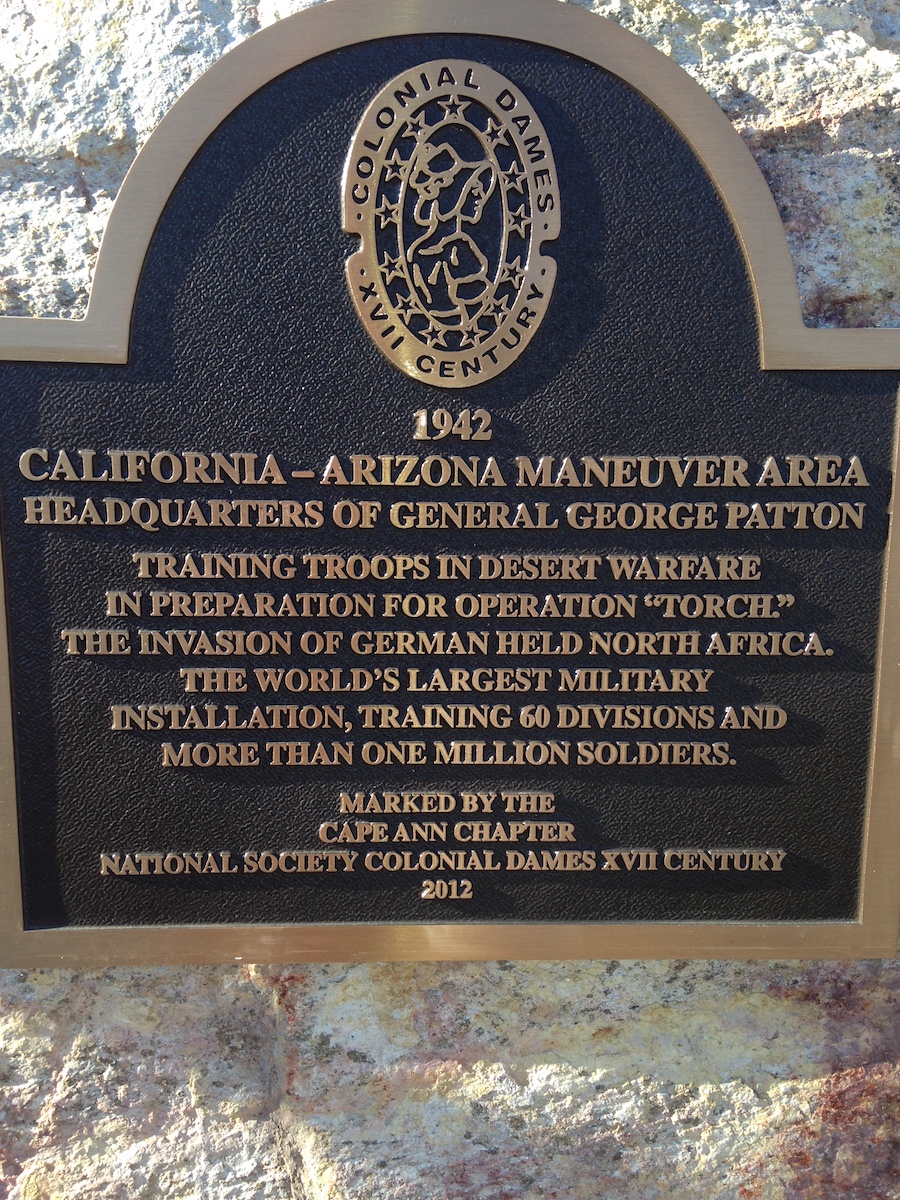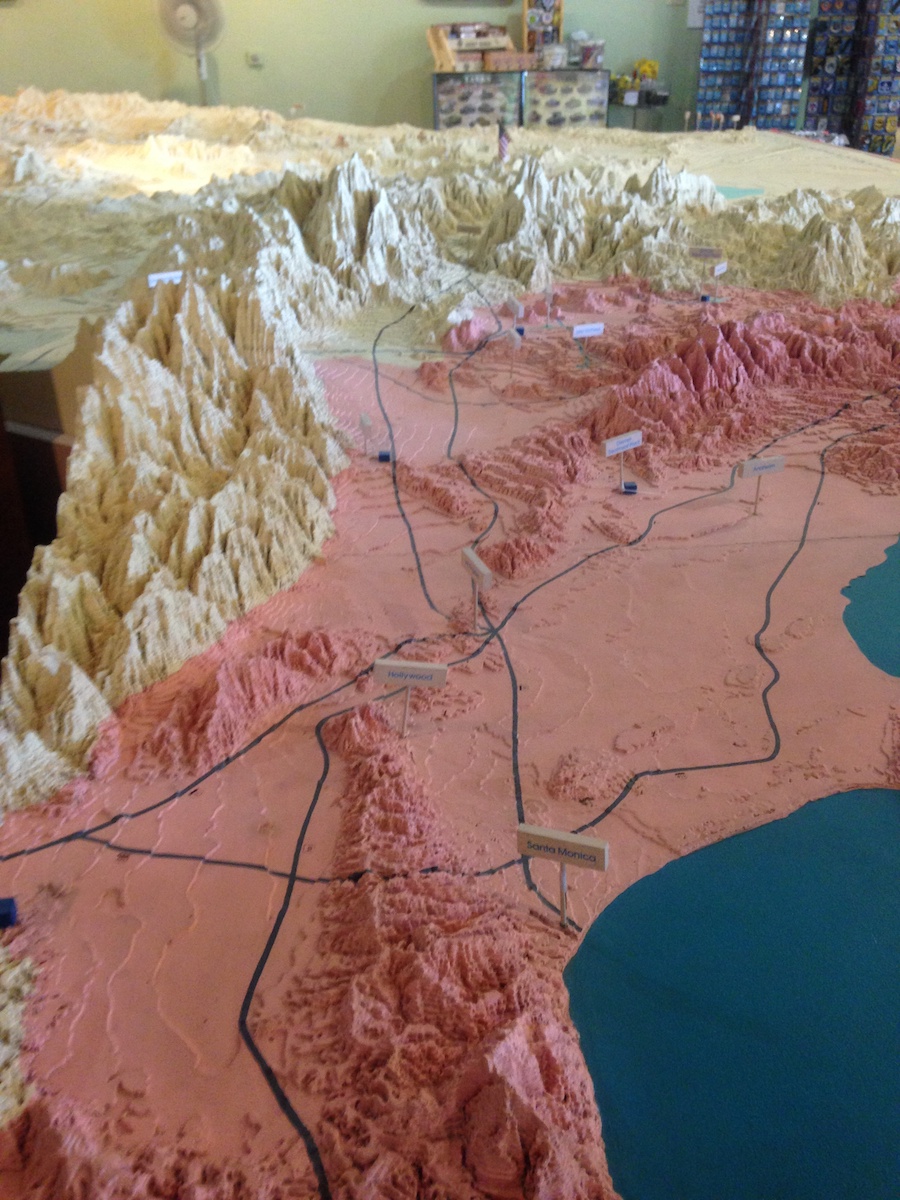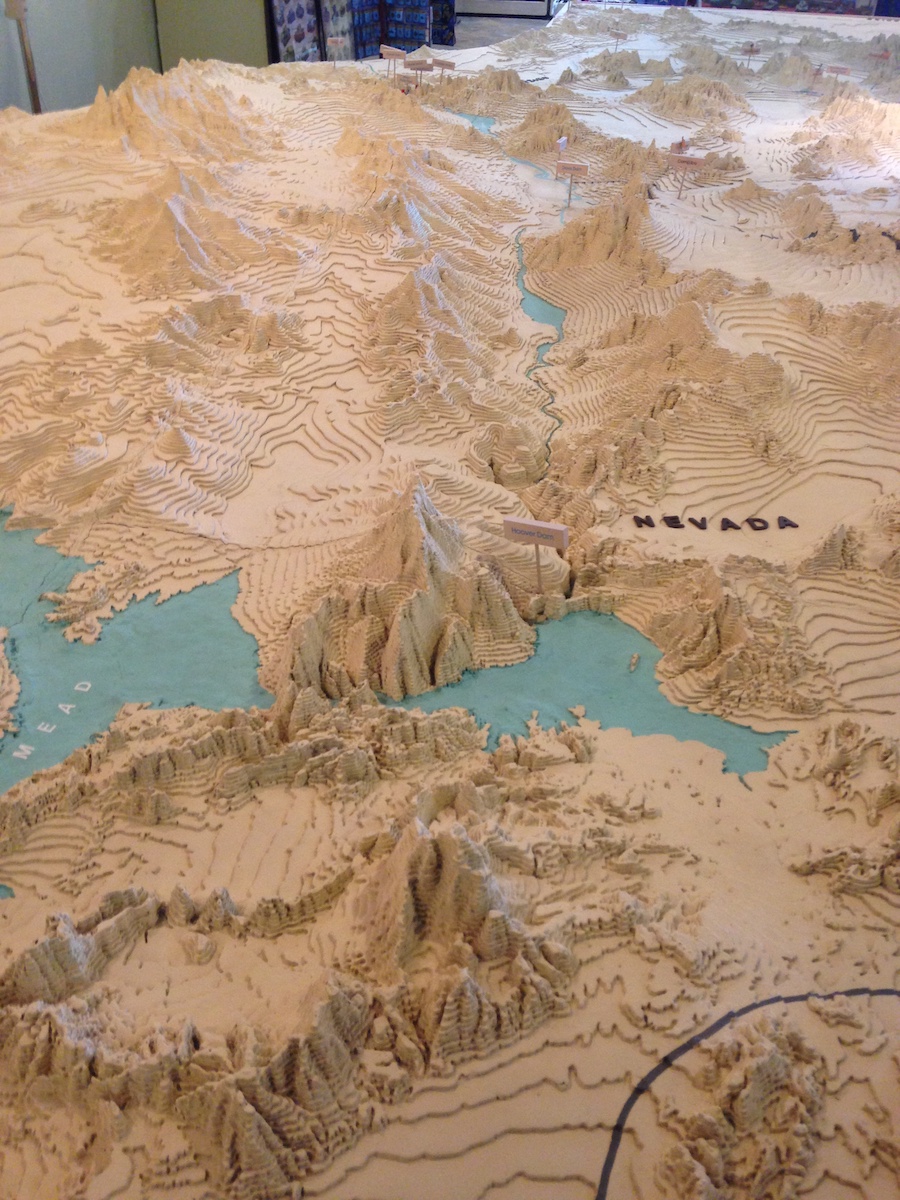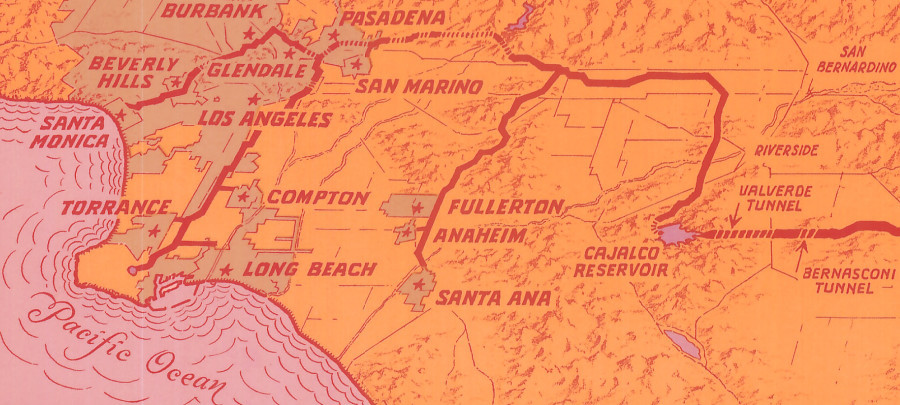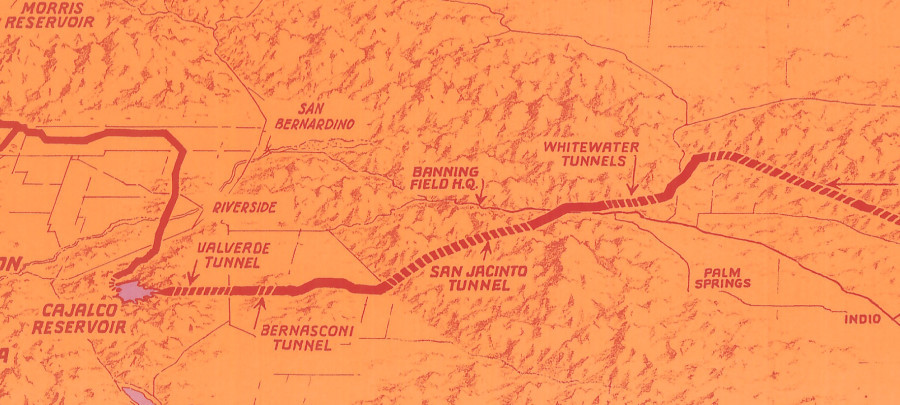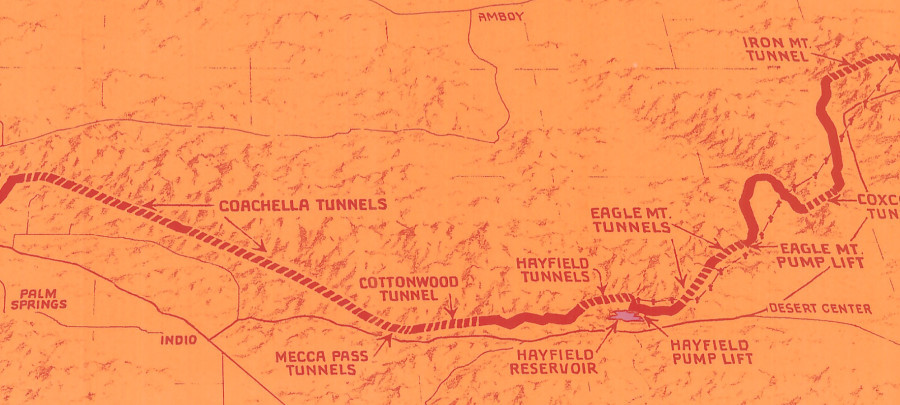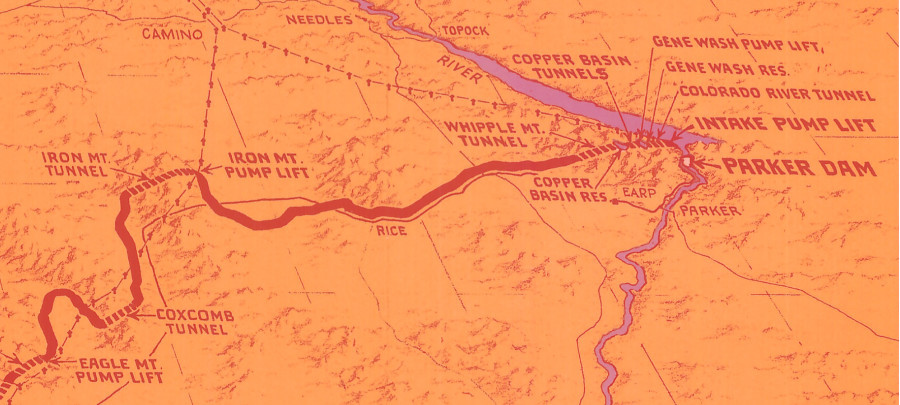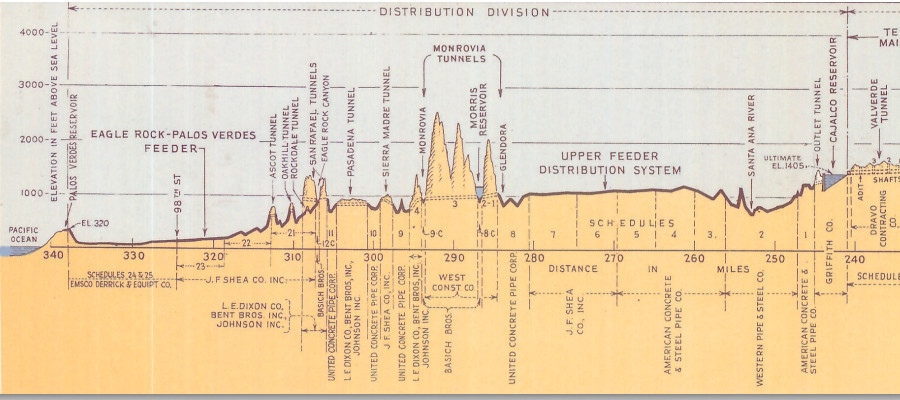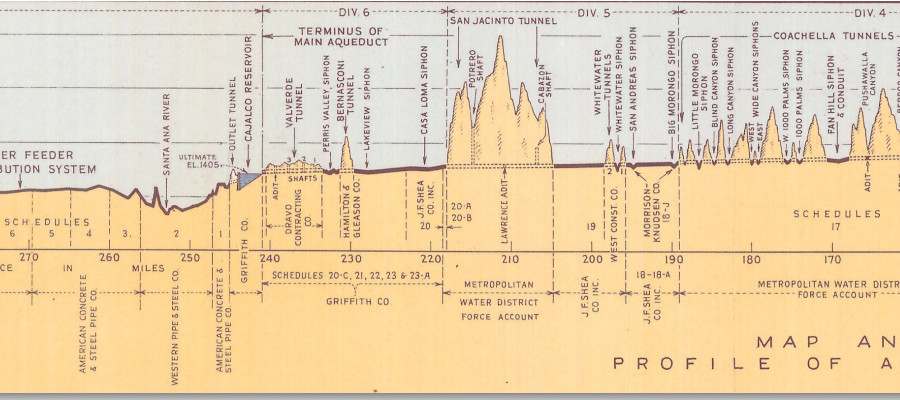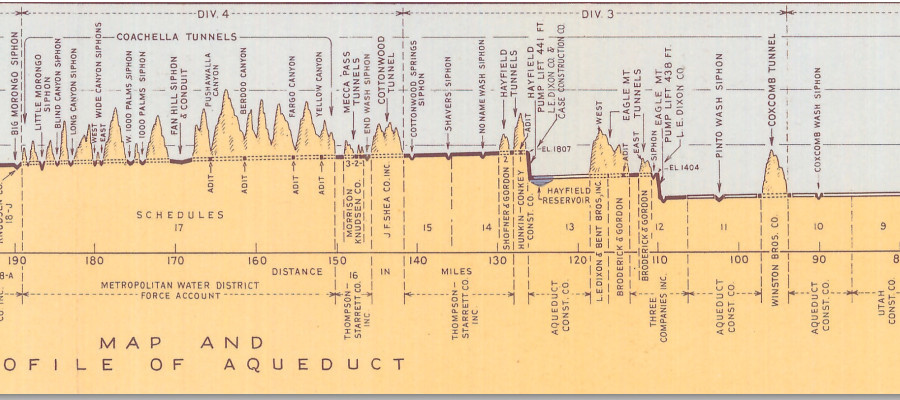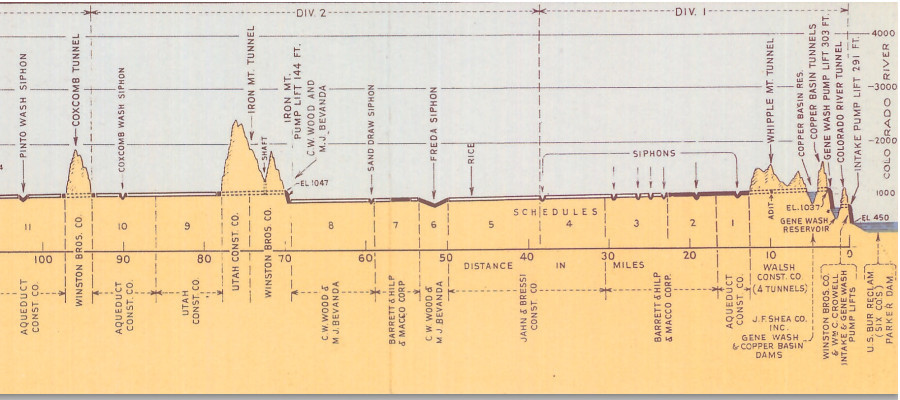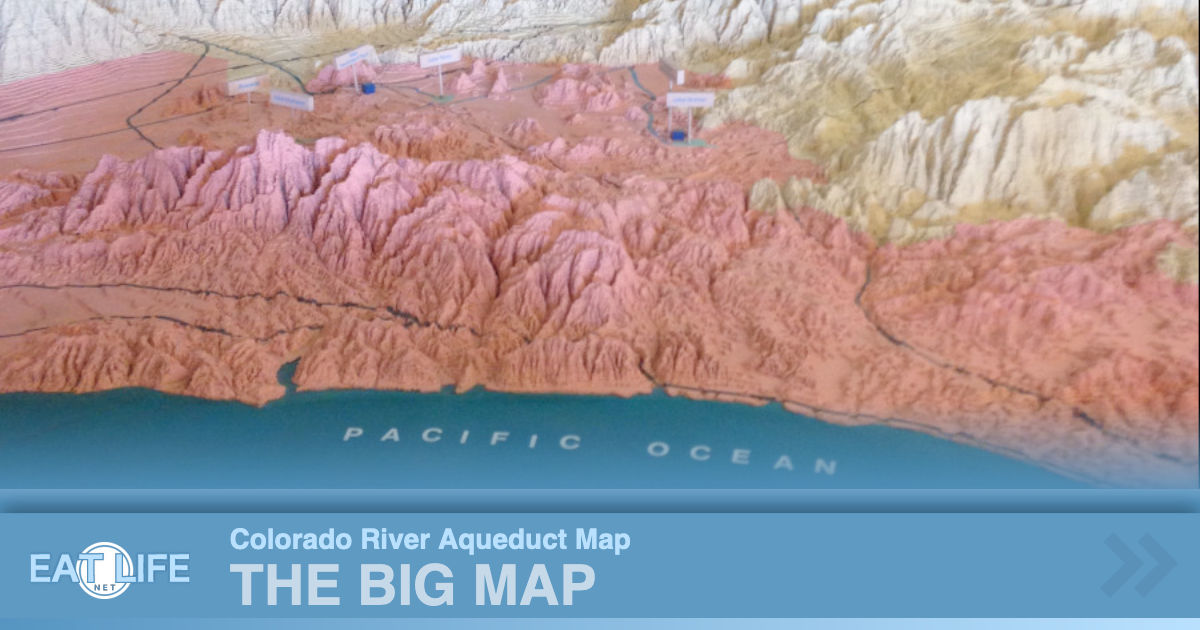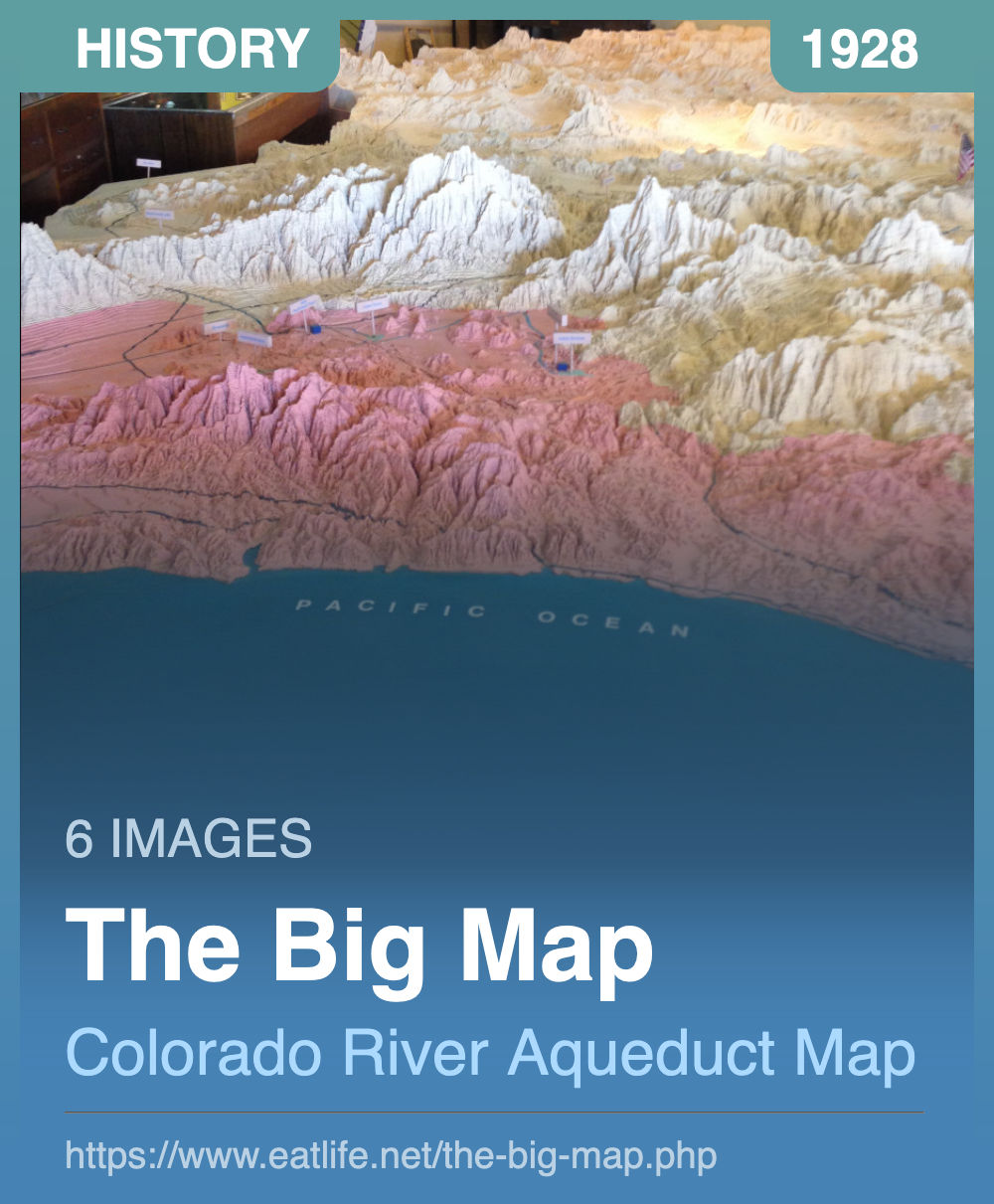The Big Map Page
Updated: October 2024
Posted: October 2021
- As the Los Angeles metropolitan area grew in the early 1900s it need more water.
- Eventually, Los Angeles laid claim to the waters of the Owens Valley, east of the Sierra Nevada, and in 1913 completed the 240-mile Los Angeles Aqueduct to deliver its waters to the fast growing city.
- But by the early 1920s, Los Angeles had grown so rapidly that the Owens River watershed was no longer enough.
- Los Angeles needed an even larger water supply: the Colorado River.
- The plan was to dam the Colorado River and carry its waters across hundreds of miles of mountains and deserts.
- Before work began on the Colorado River Aqueduct in 1933, survey teams braved the harsh desert heat for six years picking the best routes, often in unchartered territory
- In 1928 the endeavor lead to the creation of "The Big Map."
- The Big Map was made in 27 sections, composed of 269,000 separate fiber board pieces, weighing 8,000 pounds and designed to come apart like a giant jigsaw puzzle.
- in 1988 the Metropolitan Water District donate the map to the Patton Museum located at Chiriaco Summit.
- Developed by the Metropolitan Water District during the 1920's.
- Twelve expert draftsmen created more than 250,000 pieces of fiberboard to depict the 50,000 square miles of land surrounding the aqueduct's route.
- After a 6-year process, the Metropolitan Water District built the "Big Map" and carried it to Washington, D.C. during congressional hearings.
- The Map weighs close to 5 tons and is designed to come apart like a giant jigsaw puzzle.
In 1992 the size and complexity of the Colorado River Aqueduct was recognized as one of the seven 'wonders' of the engineering world by the American Society of Civil Engineers.Each year more than 1 million acre-feet of water flows through the 242-mile long Colorado River Aqueduct from Lake Havasu to Lake Mathews and, finally, to Metropolitan's 810,000 acre foot Diamond Valley Lake in Southwest Riverside County.
https://generalpattonmuseum.com/exhibits/the-big-map//exhibits/the-big-map/
The Colorado River Aqueduct:
is one of the primary sources of drinking water for Southern California. It's 242 miles long. The aqueduct takes water from the Colorado River at Lake Havasu on the California-Arizona border, west across the Mojave and Colorado deserts to the east side of the Santa Ana Mountains.Originally conceived by William Mulholland and designed by Chief Engineer Frank E. Weymouth of the Metropolitan Water District, it was the largest public works project in southern California during the Great Depression. The project employed 30,000 people over an eight-year period and as many as 10,000 at one time.
6:31 Video from Metropolitan Water District:
Map View:
Colorado River Aqueduct Route:
- The Colorado River Aqueduct begins near Parker Dam on the Colorado River.
- There, the water is pumped up the Whipple Mountains where the water emerges and begins flowing through 60 miles of siphons and open canals on the southern Mojave Desert.
- At Iron Mountain, the water is again lifted, 144 feet.
- The aqueduct then turns southwest towards the Eagle Mountains.
- There the water is lifted two more times, first by 438 feet to an elevation of more than 1,400 feet, then by 441 feet to an elevation of 1,800 feet above sea level.
- It then runs through the deserts of the Coachella Valley and through the San Gorgonio Pass.
- Near Cabazon, the aqueduct begins to run underground until it enters the San Jacinto Tunnel at the base of the San Jacinto Mountains.
- Some of the water is siphoned off in San Jacinto via the San Diego canal (part of the San Diego Aqueduct that delivers water to San Diego County).
- On the other side of the mountains the aqueduct continues to run underground until it reaches Lake Mathews.
- From there, 156 miles of distribution lines, along with eight more tunnels, delivers water to member cities.
Profile View:
70% of the precipitation in the state falls to the North of Sacramento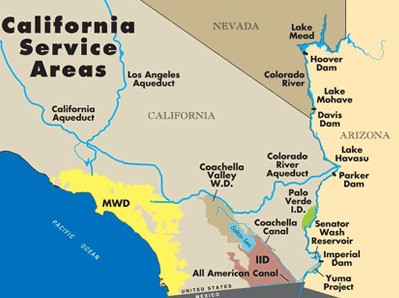
Two Water Supplies for Los Angeles:
A series of aqueducts and canals that make up the State and Central Valley Projects then move 75% of that water collected from North of Sacramento to thirsty users in the South. These water supplies provide most of the water for farmers throughout the Central Valley and the population of the greater Los Angeles area. However, parts of California rely on another important source of water: The Colorado River.
In addition to the resources from Northern California, early water planners like William Mulholland looked east to the Colorado River for new sources. In the early 1930s, California approved the construction of the Colorado River Aqueduct to provide water from the Colorado River to Los Angeles.Both the State Water and Central Valley Projects rely on snowfall from the Sierra Nevada Mountains in Northern California for water supply.The Colorado River on the other hand receives most of its supply from a different part of the country. Also, the Colorado River has two major storage facilities in Lake Mead and Lake Powell.
[]
[https://hydrowonk.com/blog//blog/2014/04/16/the-state-water-project-vs-the-colorado-river/]
The Big Map is at the Patton Museum East of Palm Springs on the 10
General Patton Memorial Museum
62-510 Chiriaco Road
Chiriaco Summit, CA 92201
